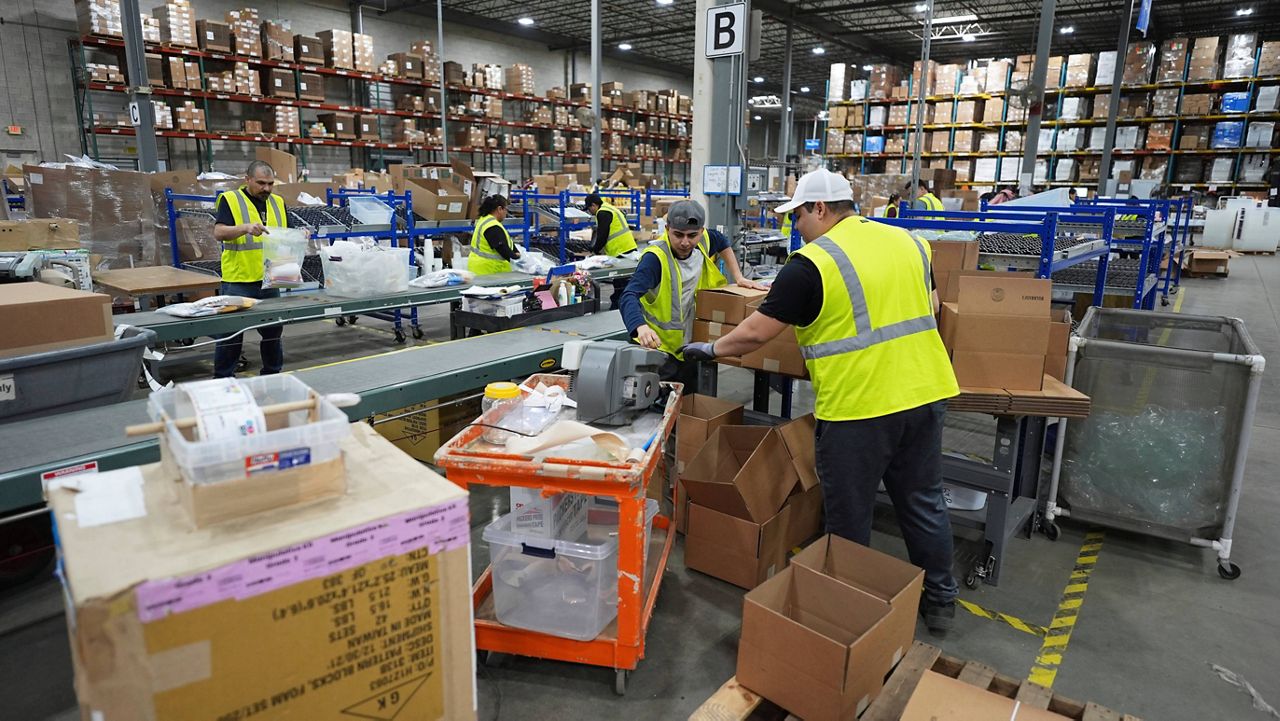WASHINGTON — The Bureau of Labor Statistics updates the Consumer Price Index each month — one of the most closely watched gauges of the economy — and the latest numbers from May show an 8.6% increase over the last 12 months.
To get a better view of what that means, Spectrum News went behind the scenes to look at how the numbers are collected and calculated.
What You Need To Know
- The Bureau of Labor Statistics updates the Consumer Price Index each month
- The CPI is one of the most closely watched gauges of the economy
- CPI numbers from May show that the index is up 8.6% over the past 12 months
Ian Marshall is a field economist at the Bureau of Labor Statistics, based in Baltimore, Md. He and 477 of his colleagues across the country at the Department of Labor track the price of everything consumers buy or rent.
“One misconception that a lot of people have is that the data comes out of thin air," Marshall said in an interview with Spectrum News. "Folks like me are all out across the country in a bunch of metropolitan areas, collecting the exact same item, the quality of the data every month.”
The process begins with surveys taken by thousands of households. Then, inflation watchers like Marshall will track the price of a particular item at a particular store for years.
Collecting the data requires economists to conduct regular in-person visits to stores to ensure the price of specific items.
“Being in the store allows us to visually inspect the item, make sure there hasn’t been shrinkflation, where the item shrinks but the price remains the same, and to make sure all of the data is correct,” said Dylan Lowery, a branch chief at the Bureau of Labor Statistics.
Some of the data is top secret: The Bureau of Labor Statistics does not reveal the stores or the brands of items they are tracking to ensure it is above suspicion of tampering.
Spectrum News joined Marshall and Lowery for the day, as they conducted their in-person data collection for the month of June.
The price of an item is just one of the millions of data points gathered. At a liquor store in Annapolis, Marshall finds that the bottle of Pinot Noir he’s been tracking is now from a different vintage year than in a previous visit. It’s a detail he must notate and ask the store manager to explain.
“There’s a lot that goes into this," Marshall said. "You have to go through every specification on the list."
The CPI measures eight categories: food and beverages, housing, apparel, transportation, medical care, recreation, education, and services like haircuts.
Consumer prices are increasing at the fastest speed in about 40 years, but Lowrey said that hasn’t changed anything about how the Bureau is operating.
“It’s interesting to see the Bureau of Labor and Statistics in the news more than when I initially started," he said. "But of course, in our office, we are focused on the data."
Once all of the data is collected, it’s transmitted to data analysts in Washington. They weigh some categories more heavily, like housing, since that is often the largest expenditure for consumers every month.
Economists just began returning to pricing items in-person a few months ago after pandemic restrictions forced them to work from home. Marshall said he travels to about 100 stores a month.
At the end of the day, the inflation rate percentage all comes down to the data — economists like Marshall visiting stores and checking the price of items, and then double checking to make sure the data is correct.






